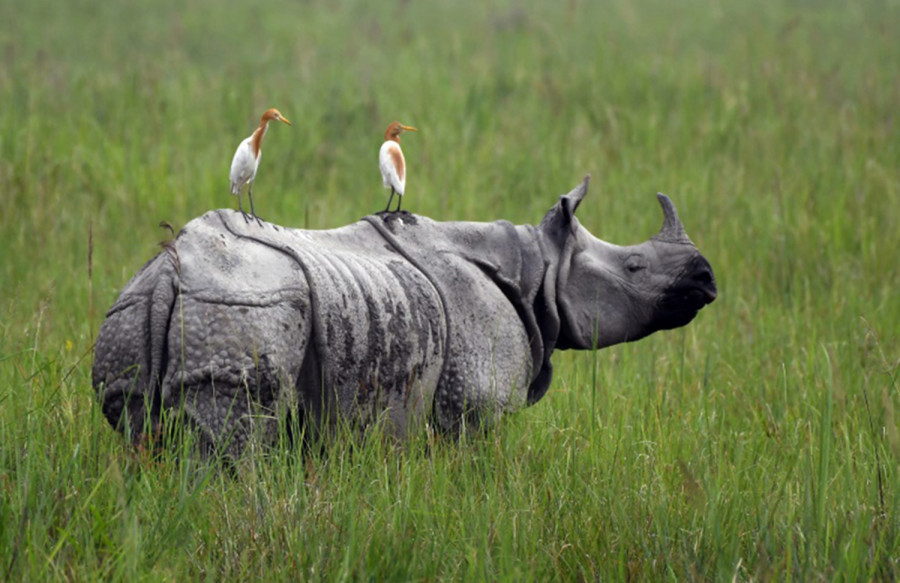Climate & Environment
Officials prioritise expanding grasslands in Chitwan park to balance rhino population
Rhinos had been found abandoning habitats in the eastern part of the park and migrating to the west where there are many community forests.
Pramita Dhakal
One-horned rhinos, among other wildlife in Chitwan National Park, previously found roaming in the eastern part of the park have been increasingly migrating to the western part of the park in search of safer habitat and food.
The western part houses many community forests that provide an ideal habitat for wildlife, and because wildlife have been preferring to migrate to the western part of the park, this has led to overcrowding in the area. To tackle this problem, park officials have begun prioritising reviving grasslands in the eastern part of the park to accommodate the growing population of rhinos in the park, and to balance their numbers in the east and the west.
In the last fiscal year, the CNP had upgraded 71 ponds for rhino conservation at a cost of around Rs 13.65 million.
Gopal Ghimire, information officer of the park, said that rhinos need a large area to roam around freely. “If all of the rhino population move to the western part of the park then they will find themselves in a constricted space. This will lead to infighting and even loss of life,” Ghimire said.
“If rhinos do not have enough food and area, then they can enter into human settlements in search of it. Last year, rhinos were spotted in the western part of human settlements and even in Narayangarh bazaar area. These kind of excursions will lead to human-animal conflict, which should be avoided at all costs.”
According to a 2015 count, Nepal is home to 645 rhinos—605 in Chitwan, 29 in Bardia National Park, eight in Shuklaphanta National Park, and three in Parsa National Park.
Park officials said that they are also going to manage grasslands to increase the number of wild water buffaloes in the park, a rare species in many parts of the world. “We are going to spread grasslands in 30 hectares of the park area for wild buffaloes,” said Ghimire. “This is the breeding season for buffaloes. It is imperative for us to manage proper grasslands for them,” he adds.
In 2017, eleven wild water buffaloes were brought to CNP from Lalitpur Central Zoo and Koshi Tappu Wildlife Reserve by the Department of National Parks and Wildlife Conservations with a hope that their translocation would improve their overall survival rate and boost their numbers. But six of the 15 wild water buffaloes that were translocated to
Chitwan National Park died after suffering from various parasitic diseases within a few months of translocation.
Within the last fiscal year, the buffaloes delivered three calves (two males and one female) in a conserved location on the eastern belt of the park in Padampur. It is estimated that there are 3,400 wild water buffaloes in Nepal, India, Sri Lanka, Cambodia, Myanmar, Thailand and Bhutan.




 5.39°C Kathmandu
5.39°C Kathmandu








%20(1).jpg&w=300&height=200)

